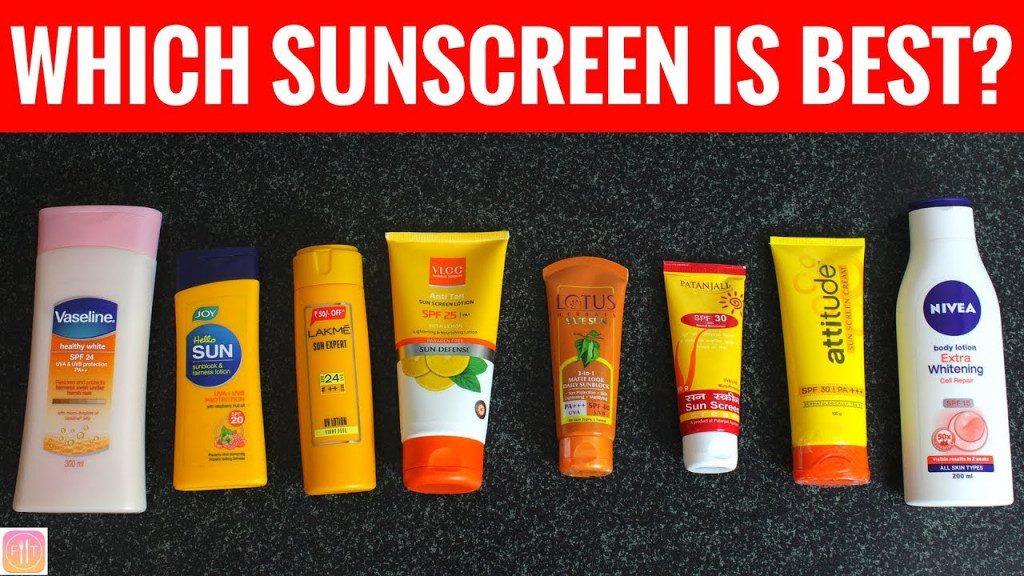(this article is being used via permission from the Environmental Working Group) The full article can be found here.
https://www.ewg.org/sunscreen/report/the-trouble-with-sunscreen-chemicals/
The Trouble With Ingredients in Sunscreens
Ingredients in sunscreens should not be irritating or cause skin allergies, and sunscreen products should be able to withstand powerful UV radiation without losing their effectiveness or forming possibly harmful breakdown products. People could inhale ingredients in sunscreen sprays and ingest some of the ingredients they apply to their lips, so ingredients must not be harmful to lungs or internal organs. In recent FDA testing, all non-mineral sunscreen chemicals absorbed into the body and could be measured in blood after just a single use, and many sunscreen ingredients have been detected in breast milk and urine samples.
Active ingredients in sunscreens function as either mineral or chemical UV filters that keep harmful rays from the skin. Each uses a different mechanism for protecting skin and maintaining stability in sunlight. The most common sunscreens contain chemical filters. These products typically include a combination of two to six of the following active ingredients: oxybenzone, avobenzone, octisalate, octocrylene, homosalate and octinoxate. Mineral sunscreens use zinc oxide and/or titanium dioxide. A handful of products combine zinc oxide with chemical filters.
When the FDA began to consider sunscreen safety, it grandfathered in active ingredients from the late 1970s without reviewing the evidence of their potential hazards. In February 2019, the agency released its final draft sunscreens monograph, which contains insufficient health and safety data to designate 12 of the 16 sunscreen filters allowed for use in the U.S. as “generally recognized as safe and effective,” or GRASE. These 12 ingredients include some of the most commonly used UV filters, including oxybenzone, octinoxate, octisalate, octocrylene, homosalate and avobenzone.
According to the agency, “nearly all of these sunscreen active ingredients … have limited or no data characterizing their absorption.” In 2019 and 2020, FDA published two studies showing that the ingredients oxybenzone, octinoxate, octisalate, octocrylene, homosalate and avobenzone are all systemically absorbed into the body after a single use (Matta 2019, Matta 2020). The FDA also found that the sunscreen ingredients could be detected on the skin and in blood weeks after application ended (Matta 2020).
These findings are troubling, because they show that sunscreen chemicals are circulating in the blood, and the FDA has indicated that the agency does not have enough information to determine whether the chemicals are causing harm.
The 2019 proposal from the FDA also concluded that the risks of using aminobenzoic acid, or PABA, and trolamine salicylate outweigh their benefits, and it proposed classifying them as unsafe. The FDA-proposed monograph gave the GRASE designation to just two active sunscreen ingredients: zinc oxide and titanium dioxide.
Active ingredient toxicity
This table outlines human exposure and hazard information for nine FDA-approved sunscreen chemicals.
|
Chemical |
FDA 2019 Proposed Status |
Skin Penetration |
Hormone Disruption |
Skin Allergy and Other Concerns |
|
Oxybenzone1 Widespread use |
Insufficient data to determine safety and concerns for skin absorption and hormone disruption |
FDA study found blood levels 438 times above cutoff for systemic exposure; detected in nearly every American; found in mothers’ milk |
Weak estrogen, moderate anti-androgen; associated with altered birth weight in human studies |
Relatively high rates of skin allergy |
|
Octinoxate Widespread use |
Insufficient data to determine safety – significant data gaps |
FDA study found blood levels 13 times above cutoff for systemic exposure; found in breast milk |
Hormone-like activity; reproductive system, thyroid and behavioral alterations in animal studies |
Moderate rates of skin allergy |
|
Homosalate3 Widespread use |
Insufficient data to determine safety – significant data gaps |
FDA study found blood levels 37 times above cutoff for systemic exposure; found in breast milk |
Disrupts estrogen, androgen and progesterone |
Toxic breakdown products |
|
Octisalate4 Widespread use and stabilizes avobenzone |
Insufficient data to determine safety – significant data gaps |
FDA study found blood levels 10 times above cutoff for systemic exposure; skin penetration in lab studies |
N/A |
Rarely reported skin allergy |
|
Octocrylene5 Widespread use |
Insufficient data to determine safety – significant data gaps |
FDA study found blood levels 14 times above cutoff for systemic exposure; found in breast milk |
N/A |
Relatively high rates of skin allergy |
|
Titanium dioxide6 to (higher in products that are powder or spray)
Widespread use |
Generally recognized as safe and effective |
No finding of skin penetration |
No evidence of hormone disruption |
Inhalation concerns |
|
Zinc oxide7 to (higher in products that are powder or spray)
Widespread use and excellent UVA protection |
Generally recognized as safe and effective |
Less than 0.01% skin penetration of zinc in human volunteers |
No evidence of hormone disruption |
Inhalation concerns |
|
Avobenzone8 Widespread use and the best UVA protection of non-mineral filters |
Insufficient data |
FDA study found blood levels 9 times above cutoff for systemic exposure |
No evidence of hormone disruption |
Breakdown product causes relatively high rates of skin allergy; unstable in sunshine – must be mixed with stabilizers |
|
Mexoryl SX9 Uncommon use but strong UVA protection |
Insufficient data |
Less than 0.16% skin penetration in human volunteers |
No evidence of hormone disruption |
Skin allergy is rare |
References
1 Janjua 2004, Janjua 2008, Sarveiya 2004, Gonzalez 2006, Rodriguez 2006, Krause 2012, Ghazipura 2017, Matta 2020.
2 Krause 2012, Sarveiya 2004, Rodriguez 2006, Klinubol 2008, Matta 2020.
3 Krause 2012, Sarveiya 2004, SCCNFP 2006, Matta 2020.
4 Walters 1997, Shaw 2006, Singh 2007, Matta 2020.
5 Krause 2012, Bryden 2006, Hayden 2005, Matta 2020.
6 Gamer 2006, Nohynek 2007, Wu 2009, Sadrieh 2010, Takeda 2009, Shimizu 2009, Park 2009, IARC 2006b.
7 Gulson 2012, Sayes 2007, Nohynek 2007, SCCS 2012.
8 Klinubol 2008, Bryden 2006, Hayden 2005, Montenegro 2008, Nash 2014, Matta 2020.
9 Benech-Kieffer 2003, Fourtanier 2008.
EWG has reviewed the existing data about human exposure and toxicity for the nine most commonly used sunscreen chemicals. The most worrisome is oxybenzone, which can cause allergic skin reactions (Rodriguez 2006). In lab studies, it is a weak estrogen and has potent anti-androgenic effects (Krause 2012, Ghazipura 2017).
The Centers for Disease Control and Prevention routinely detect oxybenzone in more than 96 percent of Americans. Study participants who reported using sunscreen have higher oxybenzone exposures (Zamoiski 2015). Investigators at the University of California, Berkeley, reported a dramatic drop in teen girls’ exposure to oxybenzone in cosmetics when they switched from their usual products to replacements that did not contain this chemical (Harley 2016).
In an evaluation of CDC-collected exposure data for American children, researchers found that adolescent boys with higher oxybenzone measurements had significantly lower total testosterone levels (Scinicariello 2016). The researchers cautioned that their results offer a single-day snapshot – they are not a controlled study of the effect of multiday exposures. The study did not find a similar hormone effect in younger boys or females.
Three other studies reported statistically significant associations between oxybenzone exposure during pregnancy and birth outcomes. One reported shorter pregnancies in women carrying male fetuses, two reported higher birth weights in baby boys, and one found lower birth weights in baby girls (Ghazipura 2017).
According to the latest proposed FDA sunscreens monograph, the agency needs further data to determine the GRASE status of oxybenzone, given that the “available literature … indicat[es] that oxybenzone is absorbed through the skin to a greater extent than previously understood and can lead to significant systemic exposure.… The significant systemic availability of oxybenzone … is a concern, among other reasons, because of questions raised in the published literature regarding the potential for endocrine activity.” Given the pervasiveness of oxybenzone exposures, we need further study to clarify its association with hormone disruption in children and adults.
According to the latest FDA sunscreens monograph, the agency needs further data to determine the GRASE status of oxybenzone, given that the “available literature … indicat[es] that oxybenzone is absorbed through the skin to a greater extent than previously understood and can lead to significant systemic exposure.… The significant systemic availability of oxybenzone … is a concern, among other reasons, because of questions raised in the published literature regarding the potential for endocrine activity.” Given the pervasiveness of oxybenzone exposures, we need further study to clarify its association with hormone disruption in children and adults.
EWG recommends that consumers avoid sunscreens with oxybenzone. But sunscreen users are exposed to other active ingredients, too. Margaret Schlumpf of the University of Zurich detected four other sunscreen filters along with oxybenzone in Swiss women’s breast milk, which suggests that the developing fetus and newborns may be exposed to these substances (Schlumpf 2008, Schlumpf 2010). She detected at least one sunscreen chemical in 85 percent of milk samples.
Sunscreen ingredients and hormone disruption
Several common chemical filters appear to be endocrine disruptors. Many studies in animals and cells have shown that the chemicals affect reproduction and development by altering reproductive and thyroid hormones, although the evidence is mixed for some studies (Krause 2012). Animal studies report lower sperm counts and sperm abnormalities after oxybenzone and octinoxate exposure, delayed puberty after octinoxate exposure, and altered estrous cycling for female mice exposed to oxybenzone. Danish researchers reported that eight of 13 chemical sunscreen ingredients allowed in the U.S. affected the calcium signaling of male sperm cells in laboratory tests, which the researchers suggest could reduce male fertility (Endocrine Society 2016).
In addition to the relationship between oxybenzone and testosterone levels in adolescents, preliminary investigations by a team of researchers at the National Institutes of Health and the State University of New York, Albany, suggest a link between higher concentrations of benzophenones and poorer reproductive success in men seeking assistance at a fertility clinic. Men with greater exposures to benzophenone-2 and/or 4-hydroxyoxybenzone had poorer sperm quality (Louis 2015) and reported that it took longer for their partners to conceive (Buck-Louis 2014). Female exposures to oxybenzone and related chemicals have been linked to increased risk of endometriosis (Kunisue 2012).
Mineral sunscreens
Mineral sunscreens are made with zinc oxide and titanium dioxide, usually in the form of microscopic nanoparticles. Evidence suggests that few if any zinc or titanium particles penetrate the skin to reach living tissues. In general, mineral sunscreens tend to rate better than chemical sunscreens in the EWG sunscreen database. However, it is important that manufacturers use forms of minerals coated with inert chemicals to reduce photoactivity. If they don’t, users might suffer skin damage, although to date no such problems have been reported.
The FDA should set guidelines and place restrictions on zinc and titanium in sunscreens to minimize the risks to sunscreen users and maximize these products’ sun protection. Our detailed analysis of nanoparticles in sunscreens is available here.
Inactive ingredients
The FDA must also look closely at the so-called inactive ingredients in sunscreens. These typically make up half to 70 percent of a sunscreen.
One ingredient in particular is a cause for concern: the preservative methylisothiazolinone, which is used alone or in mixtures with a related chemical preservative called methylchloroisothiazolinone. Lab studies indicate that methylisothiazolinone is a skin sensitizer or allergen. Over the past several years, physicians have reported serious cases of skin allergies, most notably in children exposed to this chemical by baby wipes and products meant to be left on the skin (Chang 2014). The American Contact Dermatitis Society named methylisothiazolinone its “allergen of the year” in 2013.
That methylisothiazolinone has become relatively common in sunscreen is a matter of concern because sunscreen users are likely to be exposed to significant concentrations of it. The products that contain it are intended to be applied to large portions of the body and reapplied often.
EWG recommends that the FDA launch a thorough investigation of the safety of all sunscreen ingredients to ensure that none of them damages skin or causes other toxic effects.



